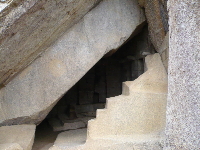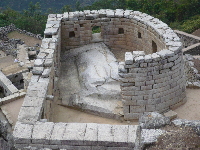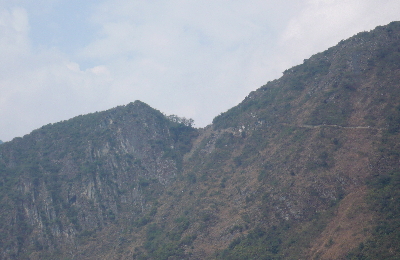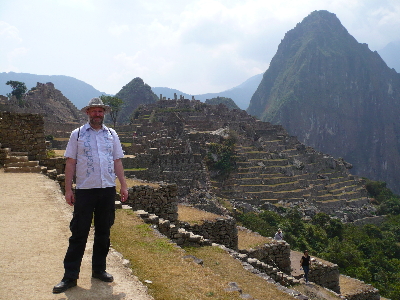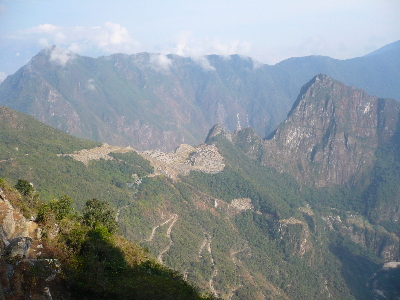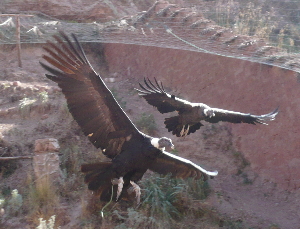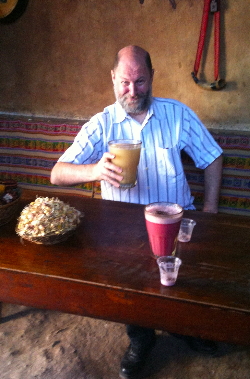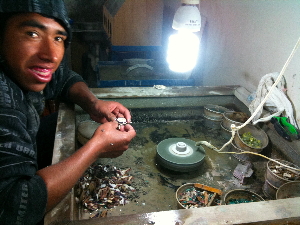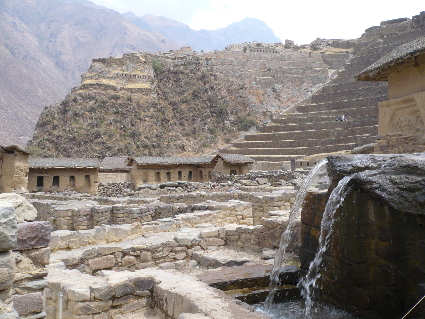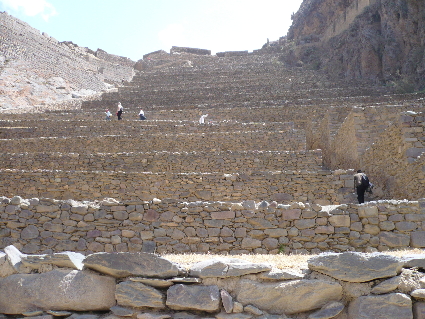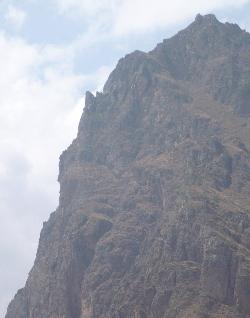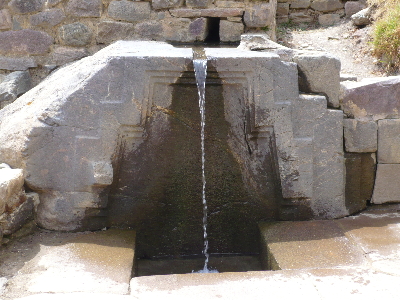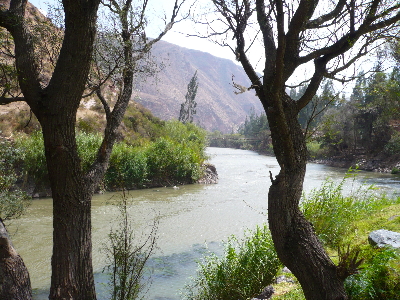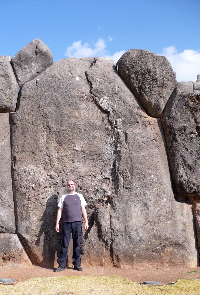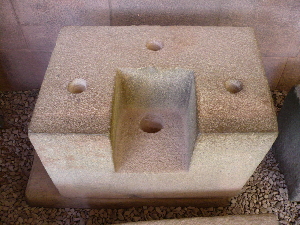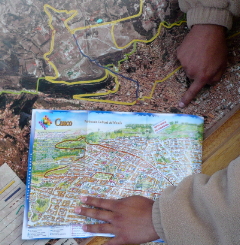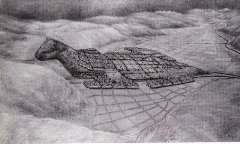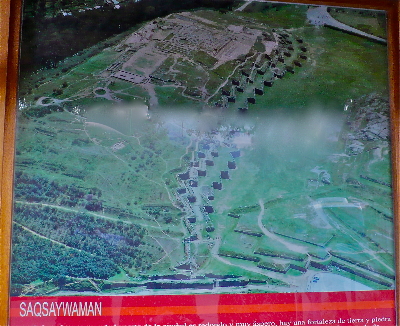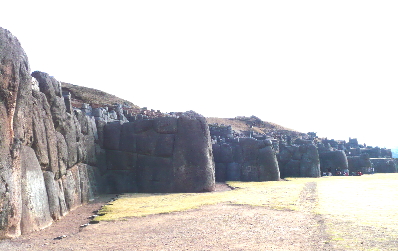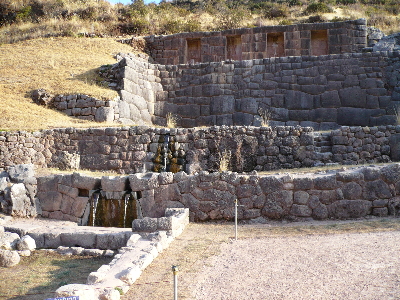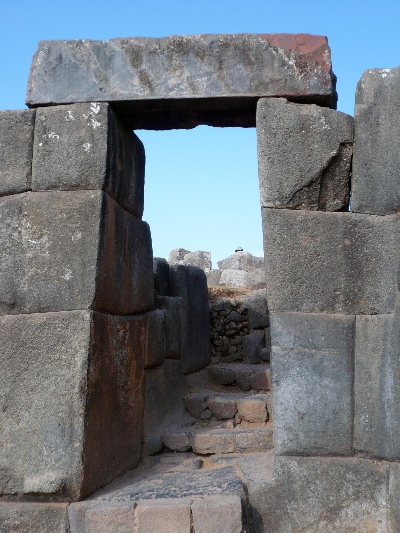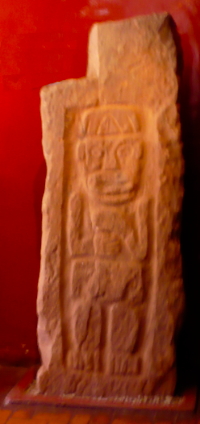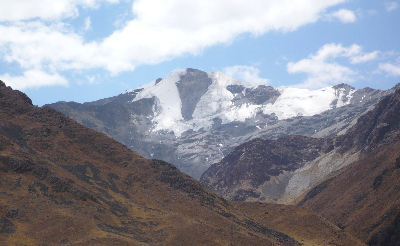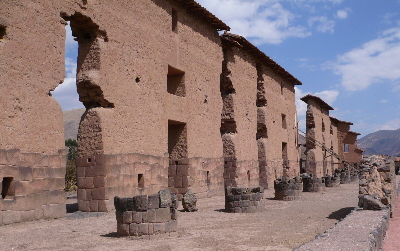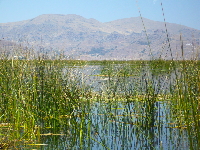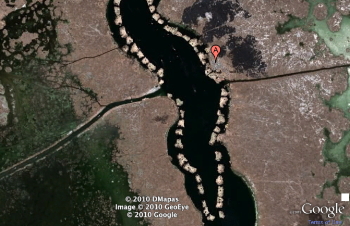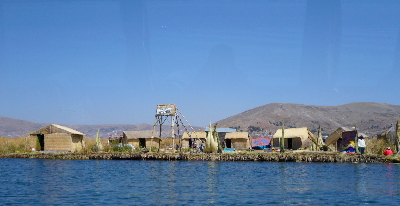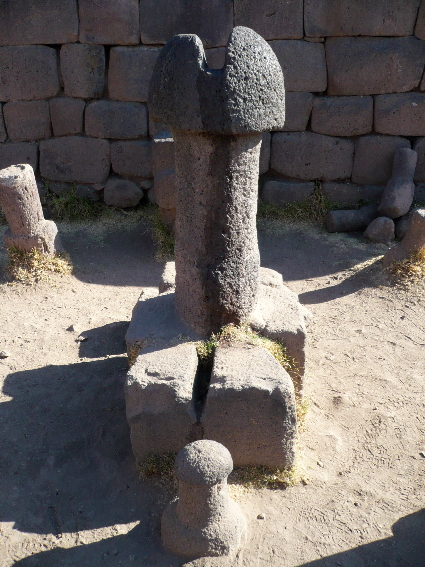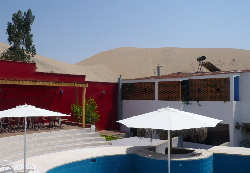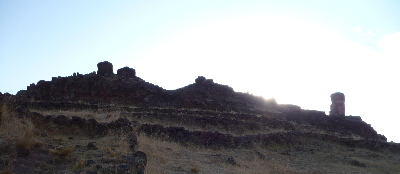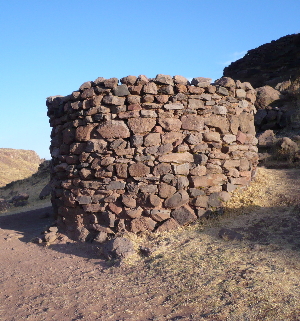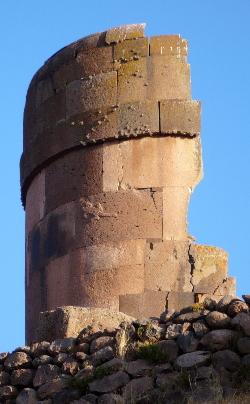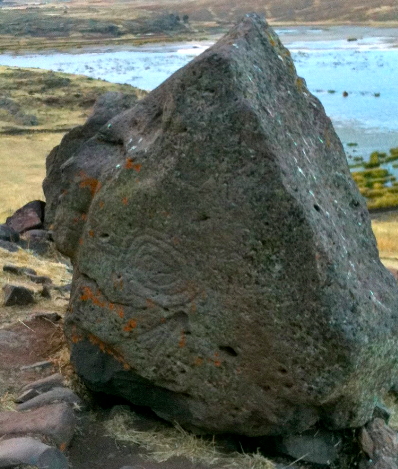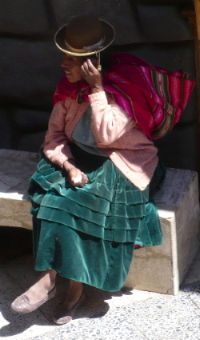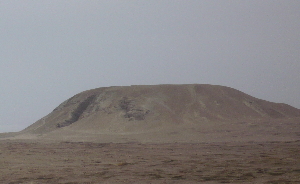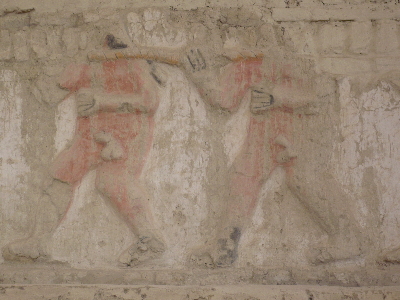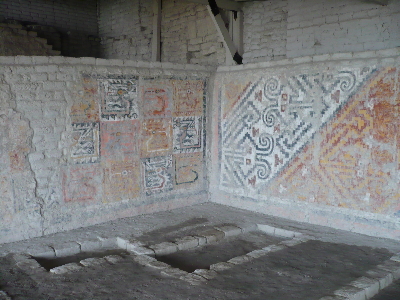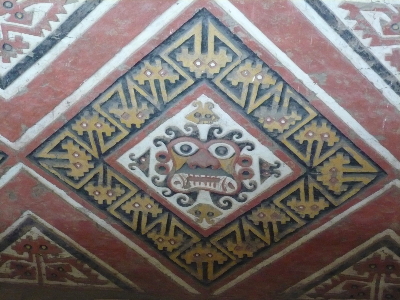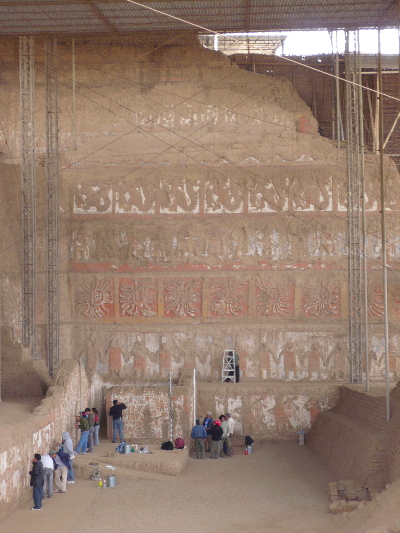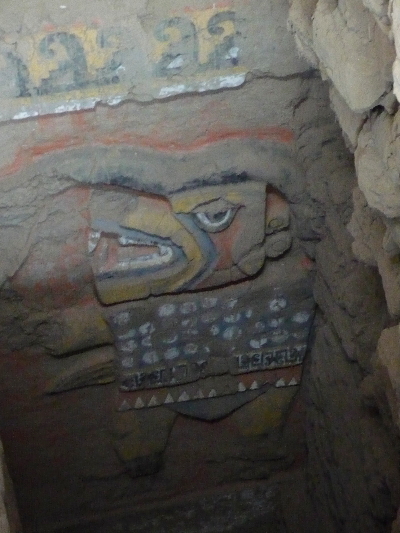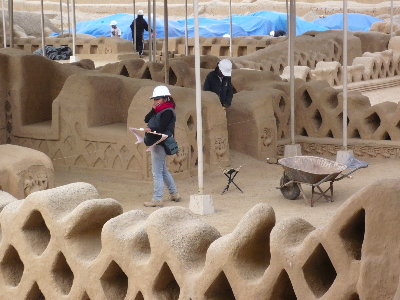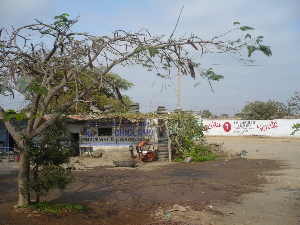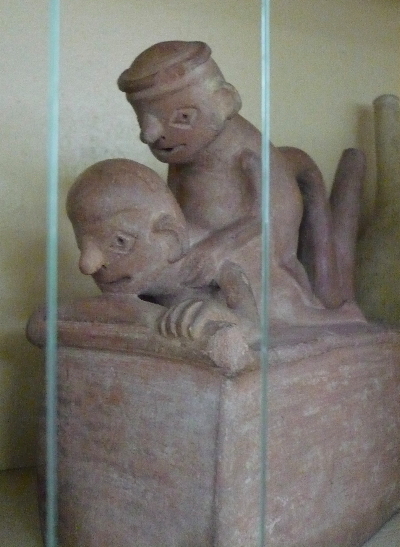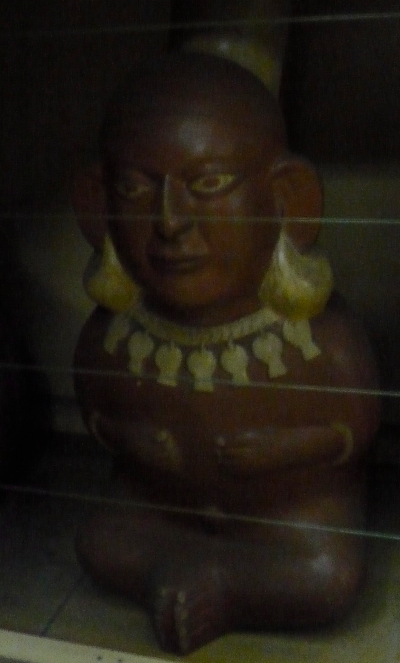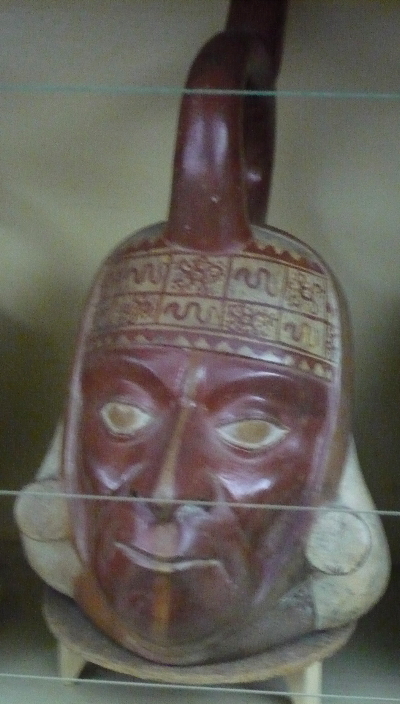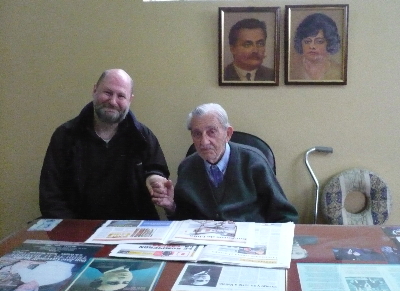My Peruvian adventure has been both fascinating and – strangely enough – restful. A change is as good as a rest, so they say, and I have to say that perutourism.com have really done well in escorting me around the country – meeting me everywhere and ensuring I get the buses, trains and planes in my itinerary, picking me up from hotels to take me to train stations, bus stations, and airports, and collecting me from them to transfer me to my new hotel, each time. It has meant the entire holiday has been stress free, as far as making arrangements is concerned – all of that is taken care of. The fact that the vast majority of the time I have had ‘private service’ – a driver, a guide, and me, either in a small minivan or private car – has meant that I’ve had a more personal experience than the description ‘guided tour’ usually implies, able to have a one-to-one with each guide, getting the most out of each place I have visited. Worth every penny – and the exchange rate has really been in my favour: Peru is cheap. And, of course, as my conversations with fellow travellers in the Cusco restaurant and at Intipunku proved, this is the surest way to insulate oneself from the potential downsides of being in a very poor country.
Highlights
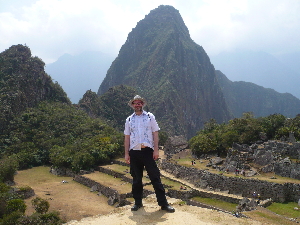
The highlights of the trip include, of course, the Lords of Sipan
Museum, which was an extremely well thought out, brilliantly executed,
and fascinating museum, which taught me more about the Moche people than
any other visit; and Machu Picchu, the deserved crown of Peruvian
ancient architecture, unmolested by anything but the jungle for 500
years since it was abandoned, an absolute jewel set in some of the most
stunning scenery I have been fortunate enough to discover. These two
really stand out as the most amazing visits of my trip. But also of
course Huaca de la Luna was an eye-opening masterpiece, too, showing
that the Moche produced all the stunning artwork known so well from
their ceramics, in relief on the walls of their temples, too. I really
enjoyed the extensive collection of Moche ceramics at the Casinelli
Museum, and the Lady of Cao pyramid and museum at El Brujo proved the
Moche had great Queens as well as Kings. I was suitably awe-struck by
the megalithic scale of the Inca architecture at Saqsaywaman, despite
only the foundations remaining, and only 20% of the site open to
tourists, and I really enjoyed the stunning Inca palace at
Ollantaytambo, with its technical wizardry, wonderful location, and
still living streets and squares.
Lowpoints
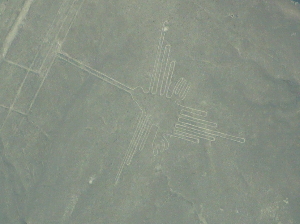
Lowpoints, if there were any, were principally Nazca – I’d say ‘not to
be recommended’, in the end: the discomfort of the experience outweighs
the opportunity to take poorer photographs than one is able to google at
a moment’s notice.
Perhaps to be considered a lowpoint, but also a welcome rest, was my day in bed in Puno trying to breathe at 13000ft!
But probably the only real ‘lowpoint’ as such, was, certainly during my
first few days, that my hip was still giving me grief, and the
associated inability to do much walking, or, later, any serious climbs.
The damage done to my hip through compensation issues related to my
congenital back problem, came about as a result of my ThomasCook
sardine-can trip to Vancouver and back, in June. [KLM to Lima were much
better, and I paid extra for a good seat.] Having been using a stick
as recently as days before departure, and wearing a strap daily right
through the holiday, I am nonetheless grateful that, in the end, this
really did not overly impact upon my Peruvian trip. I was restrained,
cautious, and careful, and it paid off. Only on a couple of occasions
(including the walk to Intipunku) did I really feel I was pushing it,
and, towards the end of this three week adventure (especially on the
walk to Intipunku) my general caution and care seemed to have nurtured
enough healing for me to achieve the things I really wanted. All I
would say that it has cost me (apart from the nuisances associated with
the strap) were: I didn’t climb the pyramid at Tucume; not wanting to
climb Amantani contributed to my decision to stay in bed on my first day
in Puno; and of course Wayna Pichu, the mountain peak overlooking Machu
Picchu, was out of the question, even though, by that point, I was
actually feeling not bad. But only 400 people are allowed up it each
day, and it’s apparently a seriously taxing climb, an absolute no-no for
anyone in my condition. But going to Intipunku, the Sun Gate, instead,
was lovely! The Inca Trail, four days for 20 year olds on gap years or
Uni summer breaks, was clearly exhausting even for those I saw arriving
at Machu Picchu for the dawn, and it’s more than 20 years since I last
walked a long distance for several days in a row.
Irrelevancies
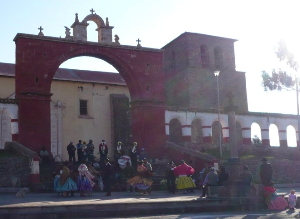
On my New Zealand holiday in 2007 there were quite a few stops arranged
by my travel agent that I really found superfluous (at best) or simply
spurious. I think I had greater control over this tour, with
PeruTourism.com, and managed to keep silly stuff to a minimum.
Nonetheless there were a few things I could’ve foregone on a tour of
ancient Peru: the horse show was definitely the most irrelevant – even
tiresome – hence this being its only mention; the brief stop at the Inca
Bar to drink Chicha was charming but unnecessary; and the half dozen or
so churches I visited that I haven’t even mentioned in this blog. Most
were actually ok, even quite interesting, but only for the syncretistic
incorporation of pre-Columbian symbols and motifs into Peru’s unique
brand of Baroque Catholicism. I have to say that I concur with the
long-held English tradition of anti-papism, and have been struck more
than ever before by how (to use one of their favourite words) ‘evil’ an
institution the Catholic Church is. [Do see Stephen Fry’s wonderful critique of the Catholic Church.]
OK, so the British (with help from the Germans, Irish, French, Belgians
and Dutch) exterminated much of the indigenous population of North
America, and left a poisonous legacy in Africa, the Middle East, and
elsewhere. But the surviving First Nations, in Canada at least, have
managed to keep an unbroken line of tradition going, there; Africa is
proudly reasserting its own culture, and flexing its muscle in the
Anglican family. India is returning to her former glory after the brief
period of colonial nuisance. Here, in South America, following the
vile practices of the Inquisition, 90% of the people are still Catholic,
speak Spanish, and view the darker skinned, more purely indigenous
people who still speak Runisamy (the Quechua language) or Aymara, with
distaste. I knew the British had a lot to answer for around the world.
Now I have seen how much the Spanish have to answer for, too.
Final Thoughts
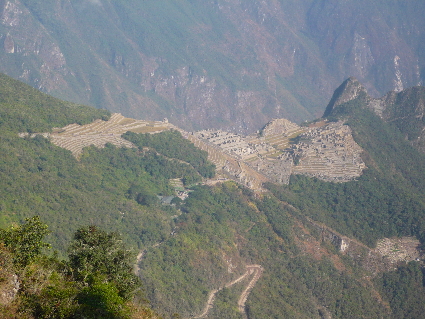
Finally, in a sort of sad, geeky kind of way, for a solo traveller in a
foreign country, I have to say that my Mac is my friend. It has given
me Facebook; enabled me to do all this blogging; iPhoto and access to
Flickr have enabled me to process and display all my holiday pics as I
go along; and Hoyles games has wiled away the odd hour of an evening in a
hotel room before sleep. The iPhone of course is the compliment – and I
am very glad of the new EU cap on data roaming charges introduced in
July: I have spent more than in the past, it’s true, because I simply
didn’t do data roaming in the past. But the cap means I now know what
the max cost will be, and I have spent that: ergo the new rules are good
for the telecomms companies. Foursquare
I have to say has been lots of fun, on my iPhone, and I have become
Mayor of two hotels in Peru, and, amazingly, became Mayor of Machu
Picchu, on Foursquare, too! How cool is that?!


